#coronavirus News
Explore tagged Tumblr posts
Text
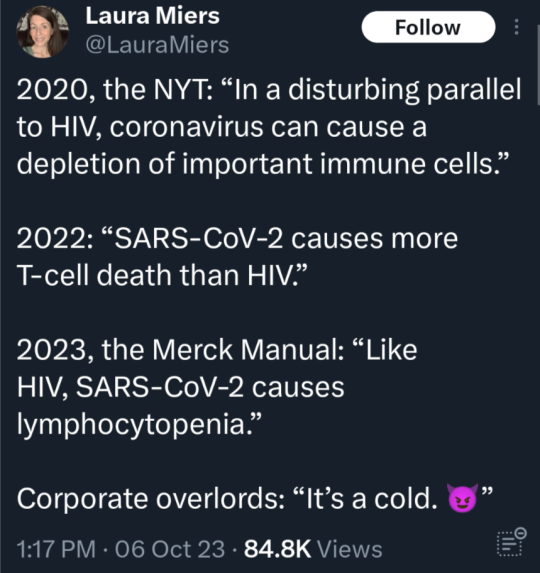
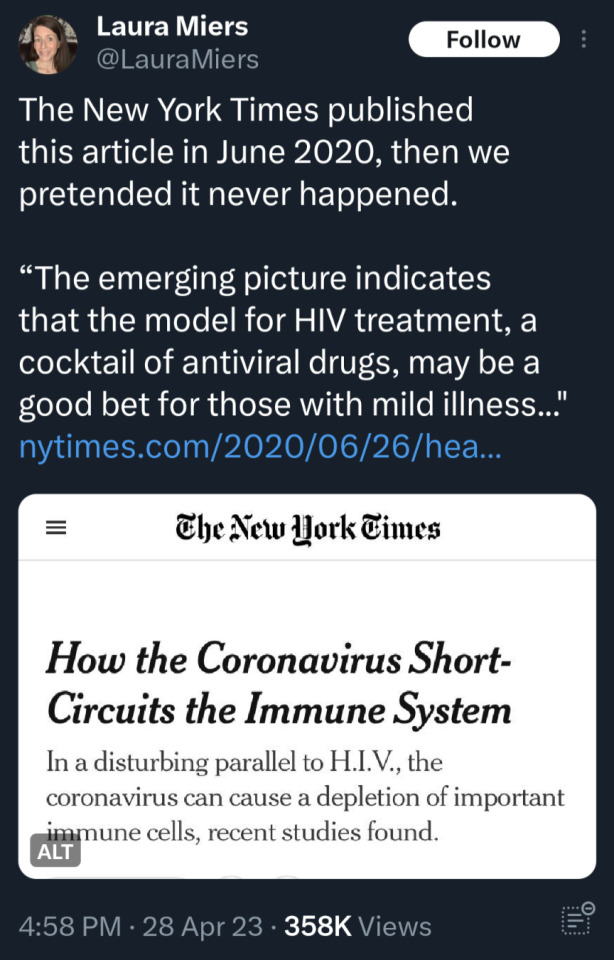

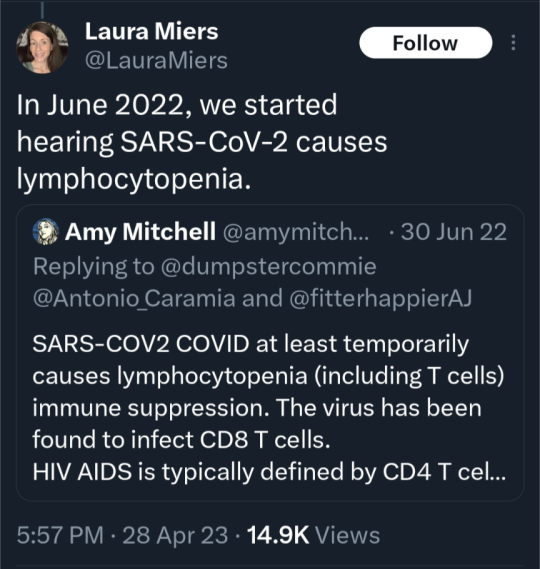
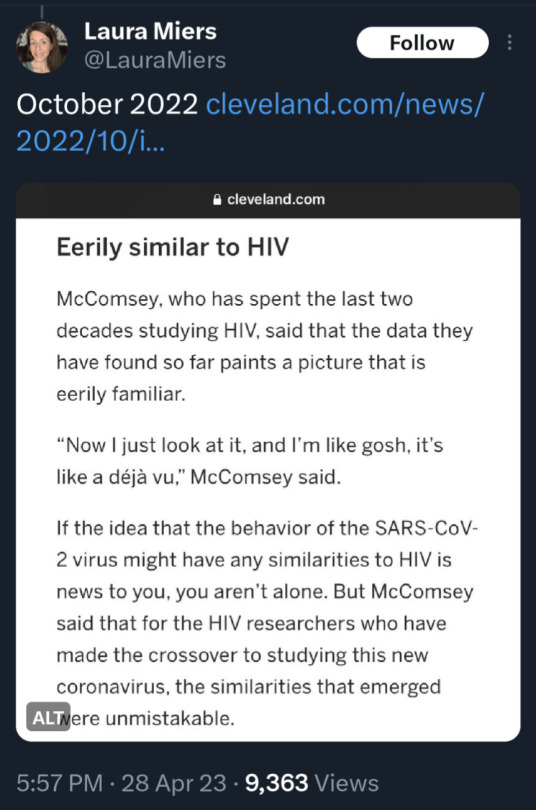
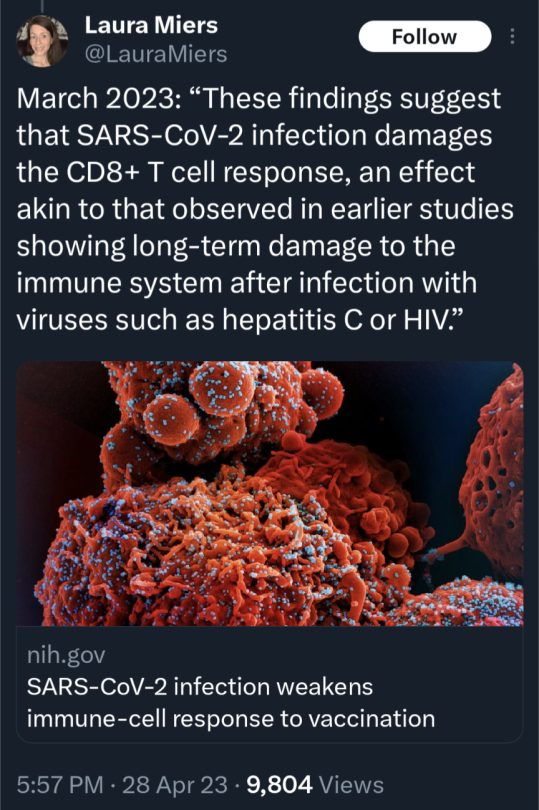
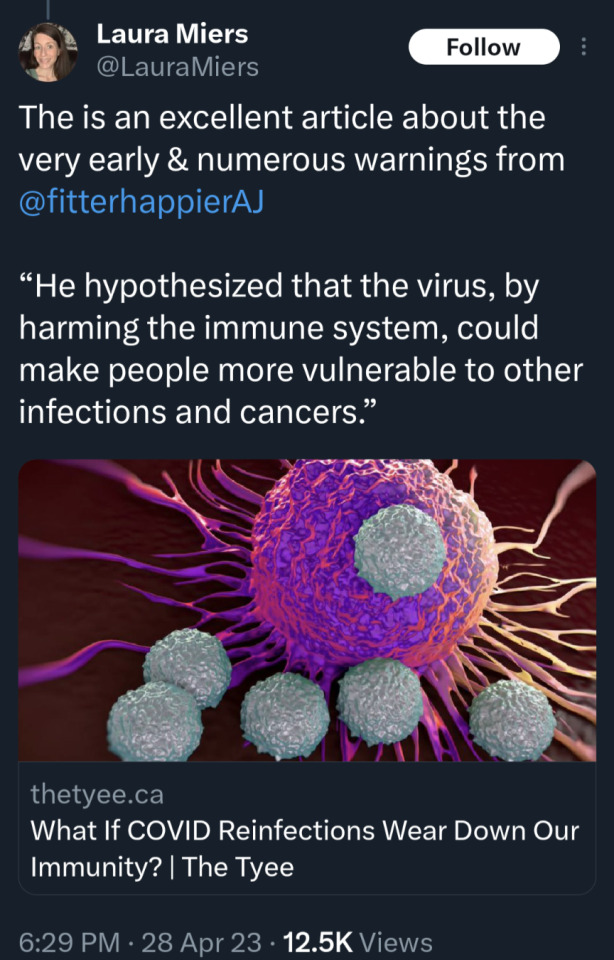
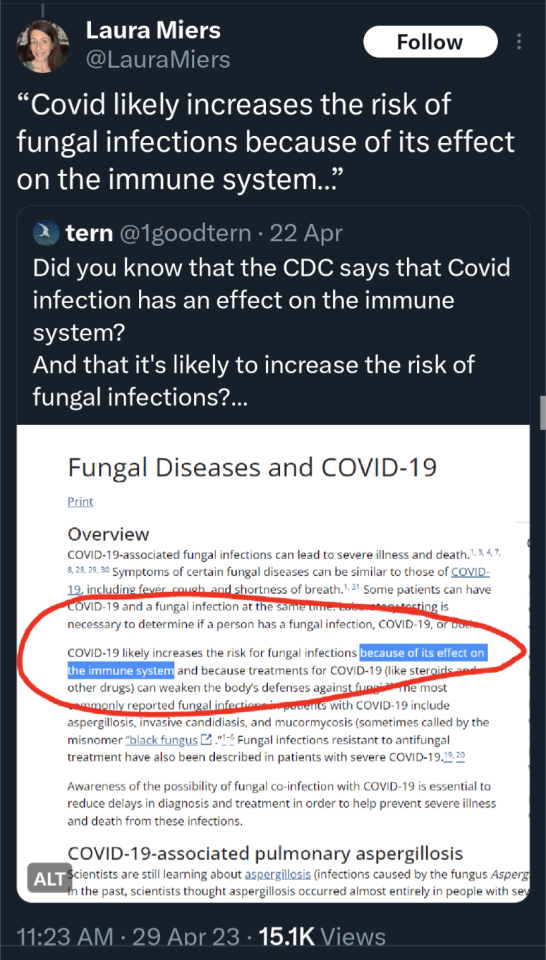
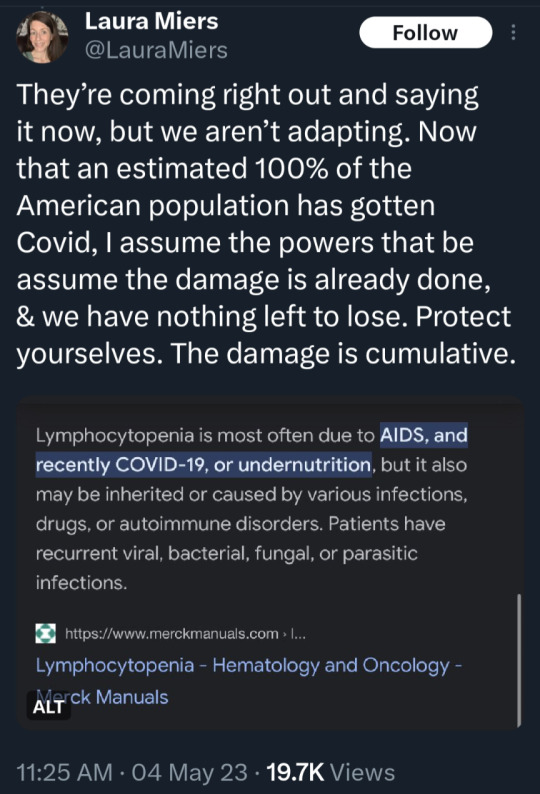

(source)
#covid 19#coronavirus#news#science#please get vaccinated#please get the booster#please stay safe#covid is not over#covid is not a hoax#please look out for each other#covid--19#long covid#yes the covid vaccine is safe
51K notes
·
View notes
Text
covid test

Crucial Steps: A Guide to Understanding the COVID Test Process
In the ongoing battle against the global COVID-19 pandemic, testing remains a pivotal tool in identifying and mitigating the spread of the virus. Understanding the COVID test process is crucial for individuals seeking clarity on their health status and for society at large in controlling the transmission of the virus. The COVID test, short for coronavirus test, is a diagnostic examination designed to detect the presence of the SARS-CoV-2 virus, responsible for causing COVID-19. This testing process typically involves the collection of respiratory samples, such as nasopharyngeal swabs, throat swabs, or saliva samples. The collected specimens are then analyzed in specialized laboratories to determine whether the virus is present. One of the most common types of COVID tests is the PCR (polymerase chain reaction) test. This method amplifies genetic material from the virus, allowing for its detection with high sensitivity. PCR tests are known for their accuracy and reliability, making them a preferred choice in diagnosing active COVID-19 infections. The process involves inserting a swab into the back of the throat or the nose to collect a sample for analysis. Another widely used testing method is the rapid antigen test. This test detects specific proteins on the surface of the virus and provides results in a relatively short timeframe. While rapid antigen tests offer quicker results, they may be less sensitive than PCR tests, particularly in individuals with low viral loads. Understanding the COVID test process extends beyond sample collection. Timely and accurate result reporting is essential for effective public health measures. Individuals undergoing testing should be aware of the typical turnaround time for results, which can vary depending on the type of test and the testing facility. It is crucial to follow testing guidelines and any recommended quarantine measures while awaiting results. Testing plays a crucial role not only in diagnosing active infections but also in identifying individuals who may be carrying the virus without exhibiting symptoms. Asymptomatic carriers can unknowingly contribute to the spread of COVID-19, making widespread testing a key strategy in controlling outbreaks. In addition to diagnostic testing, there are also serological tests that detect antibodies produced in response to a previous infection. These tests can provide insights into past exposure to the virus but are not suitable for diagnosing active infections. Serological tests can be valuable in understanding the prevalence of the virus within a community and assessing the potential for herd immunity. In conclusion, comprehending the COVID test process is vital for individuals, communities, and public health systems. Regular and widespread testing contributes to the timely identification of cases, effective contact tracing, and the implementation of appropriate public health measures. By staying informed about the different types of tests available, their purposes, and the importance of result reporting, individuals can actively participate in the collective effort to curb the spread of COVID-19 and protect the well-being of society as a whole.
Navigating Health Safely: Everything You Need to Know About COVID Tests In the ongoing battle against the global COVID-19 pandemic, COVID tests have become an integral tool in understanding and managing the spread of the virus. As individuals and communities strive to navigate health safely, it is essential to be well-informed about the various aspects of COVID testing. A COVID test, or coronavirus test, is a diagnostic procedure aimed at identifying the presence of the SARS-CoV-2 virus, responsible for causing COVID-19. The significance of these tests lies in their ability to detect infections, whether symptomatic or asymptomatic, and to facilitate timely public health interventions. There are several types of COVID tests, each serving specific purposes. The Polymerase Chain Reaction (PCR) test is a widely used method that detects the genetic material of the virus. Known for its high accuracy, the PCR test is effective in diagnosing active infections and is often employed in healthcare settings and testing laboratories. Nasopharyngeal swabs or throat swabs are commonly used to collect samples for PCR testing. Rapid antigen tests are another category of COVID tests designed to provide quick results. These tests detect specific viral proteins and are valuable for immediate screening, especially in high-traffic settings. While rapid antigen tests offer prompt results, they may have lower sensitivity compared to PCR tests, particularly in individuals with lower viral loads. Understanding the COVID test process is crucial for individuals seeking testing. Sample collection methods vary, and individuals may undergo nasal swabs, throat swabs, or even provide saliva samples, depending on the type of test and testing facility. It is important to follow testing guidelines and any recommended quarantine measures while awaiting results. Testing is not limited to diagnosing active infections. Serological tests, also known as antibody tests, are conducted to detect antibodies produced in response to a past infection. These tests contribute to understanding the prevalence of the virus within a community and assessing potential immunity. Timely result reporting is a key component of the testing process. Individuals should be aware of the typical turnaround time for results, which can vary based on the type of test and testing facility. Adhering to recommended quarantine measures during the waiting period is essential for preventing further transmission. Regular and widespread testing is a cornerstone of public health strategies to control the spread of COVID-19. Testing facilitates early identification of cases, effective contact tracing, and the implementation of targeted interventions. By staying informed about the different types of tests available, their purposes, and the importance of result reporting, individuals can actively contribute to the collective effort to navigate health safely and curb the spread of COVID-19 in their communities.
What test should I get to see if I have COVID 19 Navigating Uncertainty: What Test Should I Get to Determine COVID-19 Status? In the current landscape of the ongoing COVID-19 pandemic, individuals find themselves facing uncertainties regarding the most suitable test to determine their COVID-19 status. The question echoes in the minds of many: What test should I get to see if I have COVID-19? Navigating through the array of testing options requires a comprehensive understanding of the available tests and their distinct characteristics. One of the primary tests employed to diagnose active COVID-19 infections is the Polymerase Chain Reaction (PCR) test. This molecular diagnostic test detects the genetic material of the SARS-CoV-2 virus and is renowned for its high accuracy. If you are seeking confirmation of a current infection, the PCR test is a reliable choice. It typically involves the collection of nasopharyngeal or throat swab samples, and the results are obtained through laboratory analysis. For those who prioritize swift results, the rapid antigen test offers a quicker turnaround time compared to the PCR test. Rapid antigen tests detect specific proteins on the surface of the virus and are suitable for immediate screening. However, it is essential to note that these tests may have lower sensitivity, particularly in individuals with lower viral loads. If time is of the essence and you need quick results, the rapid antigen test may be a suitable option. Navigating uncertainty also involves considering serological tests, commonly known as antibody tests. These tests do not diagnose active infections but rather detect the presence of antibodies produced in response to a past infection. If you are curious about whether you have been previously exposed to the virus and developed an immune response, an antibody test may provide valuable insights. Choosing the right test depends on various factors, including the presence of symptoms, the urgency of results, and the purpose of testing. If you are experiencing symptoms associated with COVID-19, such as fever, cough, or shortness of breath, a PCR test is recommended for accurate diagnosis. On the other hand, if you require rapid results for immediate decision-making, a rapid antigen test may be more suitable. It is crucial to adhere to testing guidelines and follow any recommendations from healthcare professionals or testing facilities. Timely result reporting is vital not only for personal decision-making but also for contributing to public health efforts in controlling the spread of the virus. Individuals should be aware of the typical turnaround time for results based on the chosen test. In conclusion, navigating uncertainty about COVID-19 status involves making informed decisions about the type of test to undergo. Whether opting for the precision of a PCR test, the speed of a rapid antigen test, or the insights from an antibody test, individuals play a crucial role in the collective effort to curb the spread of the virus. By understanding the nuances of each test and considering individual circumstances, individuals can make informed choices to safeguard their health and contribute to the broader public health goals.
Choosing Wisely: A Guide to Selecting the Right Test for COVID-19 Detection In the ongoing battle against the global COVID-19 pandemic, the importance of selecting the right test for accurate detection cannot be overstated. Individuals are often confronted with the question: What test should I get to see if I have COVID-19? Navigating through the myriad of testing options requires careful consideration and an understanding of the distinct features of each test. One of the primary tests recommended for COVID-19 detection is the Polymerase Chain Reaction (PCR) test. Renowned for its high accuracy, the PCR test detects the genetic material of the SARS-CoV-2 virus, providing a reliable diagnosis of active infections. Typically, nasopharyngeal or throat swab samples are collected, and the results are obtained through thorough laboratory analysis. If precision in diagnosis is a priority, the PCR test is a prudent choice. For those seeking rapid results, the rapid antigen test emerges as an alternative. This test detects specific viral proteins and offers quicker turnaround times compared to the PCR test. However, it is essential to note that the rapid antigen test may have lower sensitivity, particularly in individuals with lower viral loads. If immediate results are crucial for decision-making, the rapid antigen test may be a suitable option. Adding another dimension to the testing landscape are serological tests, commonly known as antibody tests. Unlike diagnostic tests, antibody tests do not identify active infections but instead detect the presence of antibodies developed in response to a past infection. If the goal is to understand past exposure and potential immunity, an antibody test may provide valuable insights. Choosing the right test depends on various factors, including symptoms, the urgency of results, and the purpose of testing. If an individual is symptomatic with signs of COVID-19, such as fever, cough, or shortness of breath, opting for a PCR test is advisable to ensure accurate diagnosis. Conversely, if rapid results are needed for immediate decision-making, the rapid antigen test may be more suitable. Adhering to testing guidelines and following recommendations from healthcare professionals or testing facilities is crucial. Additionally, being aware of the typical turnaround time for results based on the chosen test is essential for planning and taking appropriate actions while awaiting results. In conclusion, the process of choosing the right test for COVID-19 detection involves a thoughtful evaluation of individual circumstances and testing priorities. Whether prioritizing accuracy with a PCR test, speed with a rapid antigen test, or insights into past exposure with an antibody test, individuals play a crucial role in the collective effort to curb the spread of the virus. By making informed decisions about testing options, individuals contribute not only to their personal well-being but also to the broader public health goals aimed at controlling and mitigating the impact of the COVID-19 pandemic.
Hello american hello american - Your Magazine: Famous News, Lifestyle, Health, Technology, Career & fun etc News: "Welcome to Hello American's News Hub, where stories unfold and perspectives converge. Stay informed with our diverse coverage of national and global events, providing in-depth analyses, breaking news, and thought-provoking insights that shape our world."
Health: "Hello American Health: Your Wellness Compass. Discover a wealth of health resources, expert advice, and articles dedicated to promoting holistic well-being. From fitness trends to mental health guides, we're committed to empowering you on your journey to a healthier life."
Lifestyle: "Experience the Vibrant hello american Lifestyle. Delve into our curated collection celebrating the rich tapestry of American living. Explore travel destinations, culinary delights, fashion trends, and more, embracing the diverse threads that weave the fabric of our culture."
Technology: "Hello American Tech: Navigating Tomorrow's Innovations. Explore the forefront of technology with us. From gadget reviews to AI breakthroughs, our tech section unveils the latest trends, helping you stay connected and empowered in an ever-evolving digital landscape."
Career: "Hello American Careers: Empowering Your Professional Odyssey. Embark on a journey of growth and opportunities. Access career insights, job openings, mentorship programs, and skill development resources, designed to fuel your aspirations and drive your career forward."
Education: "Education Redefined at Hello American. Embrace learning as an ongoing adventure. Dive into our educational hub, where traditional knowledge meets innovative approaches. Explore diverse learning paths, online courses, and resources designed to inspire lifelong curiosity and growth."
Each section offers a tailored experience, catering to the diverse interests and needs of the Hello American audience, while aiming to provide valuable information and resources in these respective domains.
0 notes
Text

#mask up#public health#wear a mask#wear a respirator#pandemic#covid#still coviding#covid 19#coronavirus#sars cov 2#nye 2025#new years 2025#new year
866 notes
·
View notes
Text
From the article:
Any common face mask provides significant protection against the virus that causes COVID-19, but N95 masks are most effective at slashing the amount emitted by infected people, according to a University of Maryland-led study released Wednesday. So-called “duckbill” N95 masks scored highest in the study, which measured the exhaled breath of participants who were tested both masked and unmasked to measure comparative outputs of SARS-CoV-2. The inexpensive masks, which have two head straps and a horizontal seam, captured 98% of exhaled virus, according to the study published in eBioMedicine. The researchers also found that—in what might come as a surprise to many—cloth masks outperformed the specific brand of KN95 mask that was tested. Surgical masks brought up the rear in performance out of the four types, but even they blocked 70% of the virus, the tests showed. (To reflect the general public's use of masks, study volunteers were not fit-tested for their masks or trained how to properly wear them.) “The research shows that any mask is much better than no mask, and an N95 is significantly better than the other options. That’s the No. 1 message,” says the study’s senior author, Donald Milton, a professor of environmental health and a global expert on how viruses spread through the air.
#news#covid news#health news#covid#covid 19#covid-19#coronavirus#covid isn't over#mask up#wear a mask#long covid#still coviding#covid conscious#covid cautious
582 notes
·
View notes
Text

source 1
source 2
source 3
#destiel meme news#destiel meme#news#united states#us news#us politics#joe biden#covid 19#covid#coronavirus#covid isn't over#third times the-#i wish him a speedy recovery but dang this is so scary#he's 81 years old#president biden#vote blue
557 notes
·
View notes
Text
A medical textbook from 1989 explains that coronavirus is, in fact, the common cold. 🤔
#pay attention#educate yourselves#educate yourself#knowledge is power#reeducate yourselves#reeducate yourself#think about it#think for yourselves#think for yourself#do your homework#do your own research#do some research#do your research#ask yourself questions#question everything#medical journal#coronavirus#truth be told#news#fact
349 notes
·
View notes
Note
I'm sorry I'm sending so many asks. I've been struggling like this for a year now, and it's barely gotten easier, but you've often been a good help with my anxiety. I really appreciate everything you do. It's hard to have hope.
I've had a really bad moment again recently. I have to be honest, the worst thing, that makes me the most anxious out of everything else, is COVID. Because it feels like nobody is paying attention, and that there is no good news. There is never any good news. COVID is always the catalyst for the worst of my anxious slumps. It's really bad. COVID is very, very scary. If you somehow have anything for that, I'd be thankful. Often I've only been able to set my heart on nasal vaccines, or next gen vaccines in general, but they're not going fast enough whatsoever.
I'm sorry, again. I don't want to try and treat you like a therapist. I just trust you. If this is too overwhelming, you can just delete it, but if you do, I'd like to know. Just so I'm not waiting for it to be answered.
I just ravaged through someone's doomy collapse blog, again, after stumbling on it in my rising anxiousness, and it was not good. I think I'm clearly too open-minded of a person to some degree, and I feel so pulled around by information that I see. I don't want to be placated, out of the loop, or lied to, but I don't want to feel hopelessly depressed. Everything is too complex. I feel like I've been through this maze, top to bottom, over and over again, and again. I just wish I knew how much truth their words held, or anyone else's words held.
And I wish we were all masking, at the very least. I'm holding myself back from swearing. I don't know if you'd have a good way to counteract general "collapse" thoughts, either. But that's also a thing.
<3 I'm touched by your trust.
I just found some good news about COVID - the first genuinely good covid-related news article I've seen in a while, instead of all of the "ah but young abled people are fine!" bs - and remembered this ask.
"As new varieties of the coronavirus took center stage during the COVID-19 pandemic, the odds of developing long COVID dropped. Those who were vaccinated against the virus saw the biggest plunge over time.
For every 1,000 unvaccinated people, 104 developed long COVID up to one year after an infection during the pre-delta phase of the pandemic. That fell to 95 per 1,000 during the delta variant’s era and 78 during omicron’s reign. Among vaccinated people, just 53 out of 1,000 developed long COVID up to a year after infection during delta and only 35 during omicron, researchers report July 17 [2024] in the New England Journal of Medicine.
The study of U.S. Department of Veterans Affairs Health Care System data looked at people who had a COVID infection from March of 2020 — the month the pandemic began — to the end of January in 2022. The researchers, from the Veterans Affairs St. Louis Health Care System, compared the rates of long COVID during three phases of the pandemic among those who had and had not gotten vaccinated...
A comparison of omicron infections with infections from prior eras found that 72 percent of the drop in the long COVID rate during omicron was attributable to vaccines. The remainder was due to changes in the virus and improvements in medical care and the use of antiviral treatments during the omicron phase.
Even with the steep decline in the occurrence of long COVID for vaccinated people, there is still a risk, the researchers write. With “the large numbers of ongoing new infections and reinfections, and the poor uptake of vaccination,” they continue, this “may translate into a high number of persons” with long COVID."
-via ScienceNews, July 17, 2024
--
Masking continues to be important. The virus continues to be a problem. But especially given the decline in masking, I'm really encouraged to see this news. Because long covid IS scary. And I'll take any good news on this front that I can get.
It's especially encouraging because it shows how much staying on top of your vaccinations really does matter and really can prevent long covid.
I'm also really hopeful (though I don't have a related background and have no idea how realistic my hopes are) that this trend has been continuing past the end of the study (2022).
#dyingpleasehelp#covid#long covid#covid 19#covid isn't over#coronavirus#pandemic#covid19#epidemiology#virology#good news#hope
205 notes
·
View notes
Text


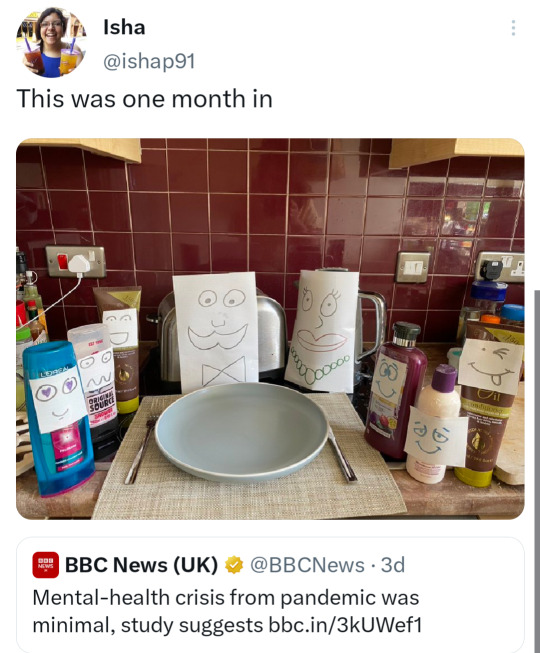

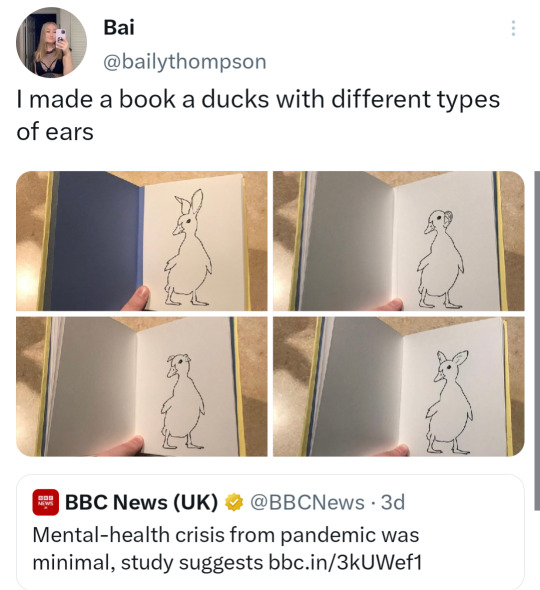



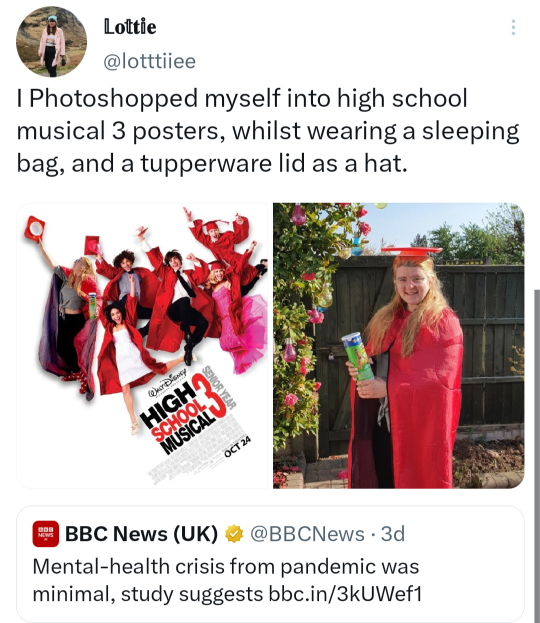

#bbc news uk#bbc news#covid 19#coronavirus#mental health#apparently they just didn't interview any poor or vulnerable people or any service workers????#they just interviewed celebrities in their mansions I guess#'yeah it was fine I just stayed in my 18-bedroom house and swam in my olypmic-sized pool every day'
1K notes
·
View notes
Text
Covid19 was planned for a long time. Search for Dr. Judy Mikovits online.
#Judy Mikovits#government#united states#coronavirus#new world order#great reset#covid19#virus#vaccines#plandemic#pandemic#dr fauci#London real
435 notes
·
View notes
Text
Last week, two of the top scientific advisors to Anthony Fauci testified before the House Select Subcommittee on the Coronavirus Pandemic, which is investigating the origins of Covid-19.
Bob Garry told members of Congress that the novel coronavirus had emerged in nature and not from a lab.
His colleague, Kristian Andersen, denounced Republicans for spreading a “conspiracy theory” that he and Garry had worked with Fauci in early 2020 to produce disinformation about Covid’s origin in the form of a March 17, 2020 Nature Medicine paper, “The Proximal Origin of SARS-CoV-2.”
That paper dismissed the lab leak theory and has been viewed nearly six million times since its publication.
Andersen, a professor at Scripps Research, acknowledged that some earlier, heavily-publicized emails between him, his colleagues and Fauci had shown that they had previously considered the lab leak hypothesis as a serious possibility.
But, Andersen told Congress, after he and his co-authors had carefully considered the evidence, they concluded that “culturing” in different cells or animal species in a lab, which can make a virus more infectious and well-adapted for humans and other animal species, had not occurred, and that the virus had spilled over from wildlife to humans.
“By the time we published our final version of Proximal Origin,” Andersen explained in his written testimony, “I no longer believed that a ‘culturing’ scenario was plausible.”
Andersen emphasized to Congress that this wasn’t because Fauci, National Institute of Health Director Francis Collins, or anyone in the White House or Intelligence Community had asked him to. The reason was simply that he and his colleagues were practicing science.
“As is almost always the case in science,” explained Andersen, “this change in belief was not based on a single piece of evidence, but a combination of many factors, including additional data, analyses, learning more about coronaviruses, and discussions with colleagues and collaborators.”
But now, Public and Racket have obtained hundreds of previously unreleased email and Slack direct messages which cover the period when Andersen and his colleagues collaborated to write “Proximal Origin.”
Those communications paint a starkly different picture from the one Andersen and Garry presented to Congress last week. They show that Andersen and his colleagues clearly thought it was indeed possible not only that the virus that causes Covid-19 had leaked from the Wuhan Institute of Virology, but specifically that it had been cultured in the laboratory.
Crucially, these new documents make clear that pressure from “higher ups” — not “additional data, analyses, learning more about coronaviruses, and discussions with colleagues and collaborators” — led Andersen, Garry, and two of their coauthors to abandon the lab leak theory as implausible.
What’s more, the messages reveal that Andersen still suspected that a lab leak was possible in mid-April, a month after Nature Medicine officially published “Proximal Origin,” and two months after the authors published a preprint.

“I’m still not fully convinced that no culture was involved,” Andersen wrote to his co-authors on April 16. “We also can't fully rule out engineering (for basic research).”
If the paper’s authors weren’t fully convinced that no culturing was possible, why did they rule out “any type of laboratory-based scenario” in their paper?
On April 16, NIH Director Francis Collins emailed Fauci. “I hoped the Nature Medicine article [‘Proximal Origin’] on the genomic sequence of SARS-CoV-2 would settle this… Wondering if there is something NIH can do to help put down this very destructive conspiracy.” By “very destructive conspiracy,” Collins was referring to an accidental lab leak, not a bioweapon or deliberate release.
The next day, April 17, Fauci described the “Proximal Origin” paper at a White House press briefing and said it came from a “group of highly qualified evolutionary virologists,” adding that he did not have their names and without disclosing that he had suggested writing the paper.
Now, the newly released messages show another case of the scientists manipulating a reporter, New York Times science journalist, Donald McNeil. Rather than honestly and openly answering his questions, they misdirected him through deceptive language.


Late last month, Congress released emails showing another senior advisor to Fauci talking about using his private Gmail account in order to avoid investigators in the future using the Freedom of Information Act (FOIA) or Congressional subpoena to obtain his emails.
The newly released messages show Andersen attempting to similarly evade public scrutiny. “We should all just stay on Slack, that’s what we should do — and not use email,” wrote Andersen.
If the consensus opinion of the scientists across dozens of their initial emails and messages had to be summarized in a single phrase, it would be the name of the Slack channel: “project-wuhan_engineering.” The name showed just how probable they felt it was that the virus came from a lab.
Then, on February 6, something strange happened. Andersen changed the name of the Slack channel from “project-wuhan_engineering” to “project-wuhan_pangolin.” For three years, some proponents of the natural spillover theory have claimed that pangolins could be an intermediate link in the transmission of SARS-CoV-2.

Wrote Andersen on February 1, 2020, “I think the main thing still in my mind is that the lab escape version of this is so friggin' likely to have happened because they were already doing this type of work and the molecular data is fully consistent with that scenario.” A few days later, he and the other authors were searching for a plausible intermediate host such as a pangolin that would allow them to refute the theory.

The new Slacks and emails present overwhelming evidence that the paper’s co-authors were not simply following the data, but actively sought to discredit the lab leak, conceal information, deceive journalists, and mislead the public. The question now is why.
From “Project-Wuhan_Engineering” to “Project-Wuhan_Pangolin”
Only a tiny fraction of the communications between Andersen and his coauthors has been reported upon before now. Drawing on the newly released messages, Public has cataloged nearly 60 clear statements by Andersen and his colleagues expressing their belief that a lab leak, and the bioengineering of viruses, were the origin of Covid-19 between January 31 and February 28, 2020. Of those statements, only around a half-dozen have been previously reported upon.
In early February, Andersen and the other “Proximal Origin” authors agreed that the features they observed in SARS-CoV-2 exhibited exactly the steps they would have taken if they themselves had decided to engineer an infectious SARS-like coronavirus. The virus’ characteristics were “exactly what was expected by engineering,” wrote Edward Holmes on Slack on February 1.
A key piece of evidence that the virus may have been engineered is the “furin cleavage site” on the “spike protein.” The special feature allows SARS-CoV-2 to bind to human receptor sites, making the virus highly infectious.
In reference to it, Holmes said, “Bob [Garry] said the insertion was the 1st thing he would add.”
“Yeah,” agreed Andersen, “the furin site would be the first thing to add for sure.”
Garry explained how easy it would be to engineer the virus. “Transmitting a bat virus like RatG13 in HeLa cells and then asking your graduate student to insert a furin site…” he wrote. “It’s not crackpot to suggest this could have happened given the GoF [gain of function] research [which increases infectiousness] we know is happening.”

“Bottom line,” said Andersen on February 2, “is that we can’t prove whether this is natural or escape.”
The newly revealed messages also show the scientists were specifically concerned with highly controversial research in the lab of a virologist named Shi Zhengli at the Wuhan Institute of Virology to make SARS-like coronaviruses to make them more infectious.
Public and Racket were the first to report last month that senior officials in the US government are “100%” confident that the first three people in the world to get sick with Covid-19 worked in Shi’s lab.
Referring to papers published by Shi’s team, and others, Andersen wrote on February 2, “The main concern coming up reading through all these papers is the kind of stuff that is being done — getting MERS-like viruses to infect humans, getting SARS-like viruses to cause disease in mice and infect humans, etc. There's a strong focus on the spike protein for all that work.”

But then, three days later, on February 5, Andersen’s attitude changed radically.
In Congress, Andersen claimed he had changed his mind based on the scientific evidence that an intermediary animal host, such as a pangolin, was possible.
But their internal communications indicate otherwise.
On February 3, the group began casually searching for an intermediate animal species to support a natural spillover hypothesis. At first, they discussed the ferret. Were they working with the best available science? Perhaps not. Gary at one point shared the Wikipedia page of the Chinese ferret-badger.

Two days later, Andersen shared pangolin viral sequences, began framing natural origin as the pre-conceived conclusion of their paper, and renamed the Slack channel. He thought the pangolin sequences might be the missing link they were desperately looking for.
But the pangolin sequences didn’t get them very far. On February 12, four days before Nature Medicine published “Proximal Origin, Andersen confessed on Slack: “For all I know, people could have infected the pangolin, not the other way.”
But in Proximal Origin, Andersen and his colleagues wrote something much more definitive: “The presence in pangolins of an RBD [receptor binding domain] very similar to that of SARS-CoV-2 means that we can infer this was also probably in the virus that jumped to humans” [emphasis added].
Then, on February 18, two days after the pre-print publication of “Proximal Origin,” Andersen once again admitted, “Clearly none of these pangolin sequences was the source though.” And then once again, on February 20, Andersen emphasized. “Unfortunately the pangolins don’t help clarify the story.”
Andersen’s colleague, Garry, agreed. “Pangolin seq give no def answer,” he wrote on Slack on February 22.
Unable to credibly identify ferrets or pangolins as intermediate hosts, the scientists continued to privately admit that they could not rule out a lab leak.
On April 16, two months after the publication of the “Proximal Origin” preprint, Andersen shared cell culturing papers from Shi’s lab at the Wuhan Institute of Virology on Slack. He noted that Shi’s work was “the main reason I have been so concerned about the ‘culture’ scenario.”
Cell culturing is a method through which viruses can be passed multiple times through cells in order to render them more infectious, essentially re-creating the natural selection process in a lab. This method falls within the “laboratory-based scenarios” that the highly-cited “Proximal Origin” paper claimed to rule out.
Just one week later, on Twitter, though, Holmes disparaged “lab escape conspiracy theories.” Privately, the scientists were still asking questions, but publicly they were sticking to the narrative.
What happened in the days preceding February 5, when Andersen changed the name of the “Proximal Origin” team’s Slack channel from “project-wuhan_engineering” to “project-wuhan_pangolin”?
One clue comes from what has already been reported: Andersen and his co-authors had a February 1 conference call with Fauci and Collins who used the opportunity to “prompt” them to write the “Proximal Origin” paper.
The new messages reveal an additional clue. On February 3, Andersen attended a meeting arranged by Fauci at the National Academy of Sciences, Engineering, and Medicine (NASEM), the august science advisory organization created by Congress in 1863 to be scrupulously independent and above politics.
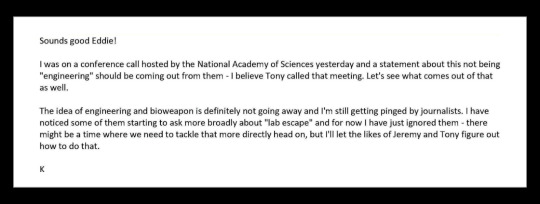
The Academy meeting on February 3 occurred directly before Andersen, and others changed their tune for plainly non-scientific and apparently political reasons. Other attendees at the February 3 meeting included Collins and representatives from the FBI and the Office of the Director of National Intelligence (ODNI).
One of the new messages shows that Andersen was anxious about his association with the Academy. “One main problem I have too,” he wrote on February 19, is that my name is on e.g., the NASEM letter and other 'official' things looking at this - so I need to be able to deflect potential future enquiries that could directly involve/name me.”
The context for Andersen writing that message was a discussion with his colleagues about how to misdirect a New York Times reporter, Don McNeil, who was asking tough questions about whether Covid-19 may have come from a lab.
On February 6, Rambaut shared an email from McNeil with the Slack channel. Rambaut’s copied text of McNeil’s email stated, “I'm trying to check out a rumor that an editor got from a government source — that the US government is trying to seriously investigate the possibility that the nCoV came out of the Wuhan Virus Laboratory rather than out of a wet market.”
Rather than answer honestly, Rambaut and the other authors began working to misdirect McNeil. Their discussions seemed more characteristic of a political spin operation than a good-faith attempt to inform the public. “I am thinking of just replying and saying that ‘I see nothing in the genome that would make me believe it has been genetically manipulated in a lab.’”
“It would be prudent to continue to pre-think responses” to McNeil, Garry suggested.
Eleven days later, the Slack group continued to coordinate their responses to McNeil. Kristian Andersen shared a new email, saying, “He's asking some very difficult to handle questions.”
In his drafted response to McNeil that he shared with the Slack Channel, Andersen wrote, “National security? White House? Spooks? I wish my life was that exciting, but I unfortunately don't have anything to add here - my existence isn't really in Technicolor, so I'm just focused on the science ;-).”
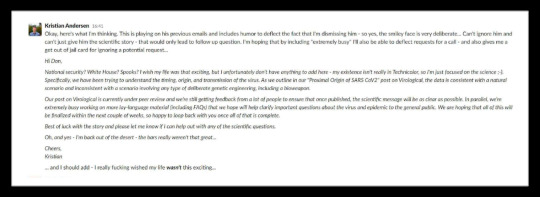
Privately, Andersen told his fellow authors that the smiley face was “very deliberate” and that his reply “includes humor to deflect from the fact that I’m dismissing him. He added, “I really fucking wished my life wasn't this exciting... “
In a comment to Public and Racket, McNeil declined to comment on the contents of the emails but wrote, “Obviously, if one of the authors of the Proximal Origins paper had told me he thought it was actually created in a lab, I would have reported that.”
Who Were The “Higher Ups”?
The new emails and messages do not prove that Fauci, Collins, the FBI, ODNI, or anyone else associated with the National Academy meeting on February 3 turned Andersen and his colleagues away from the lab leak theory. Other factors may have been at play.
For example, the new messages show that a Nature Medicine editor and Nature Medicine reviewers pushed Andersen and the other authors to even more conclusively assert that natural origin was the only plausible scenario. They and others may have leaned on Andersen and the four other scientists to categorically abandon the lab leak theory.
But the messages and emails plainly show that what Andersen and his colleagues were doing wasn’t science but rather rhetoric. By their own account, they could not show how the virus had gone from bats to an intermediary, whether ferrets or pangolins, to humans.
The new messages also show that the scientists were pressured to publicize their findings by certain interested parties whom they called “higher-ups.” Andersen said the “Proximal Origins” paper was rushed because of “pressure from the higher-ups to get it out.”
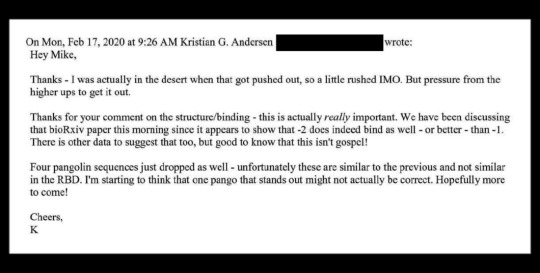
Later, in an interview with a Congressional committee, when asked who these “higher-ups” were, Garry said, “I don't want to speculate on who their higher-ups were. But, I mean, I was aware that there were people that were discussing the potential origins and, you know, a possible lab origin at, you know, different government agencies.”
One possibility was the top ally to Fauci and Collins in Britain, Jeremy Farrar of Wellcome Trust. On February 16, the day Nature Medicine published “Proximal Origins,” Farrar emailed one of Andersen’s coauthors, Andrew Holmes, asking him to make the paper public.
Farrar had already shared the paper with Collins, who had also emailed Holmes to push for immediate publication. A few hours later, Holmes wrote that he had submitted the paper after “pressure from on high.” Said Holmes, “Jeremy Farrar and Francis Collins are very happy.”
In a recently released interview with the House Select Subcommittee on the Coronavirus Pandemic, Andersen called Farrar the paper’s “father figure” but repeatedly denied that Fauci and Collins guided the paper and would not identify them as “higher ups”
“I wouldn't speculate on that,” Andersen said during the interview.
But then Andersen added that there were, indeed, “higher-ups,” and that they were “in the intelligence community both here and in the United Kingdom.” It is such a remarkable passage that it is worth quoting at length.
“I mean,” said Andersen to the House Subcommittee, “it was clear that the White House Office of Science Technology Policy at that February 3rd conference call, Dr. Fauci, in my initial email to me, talked about contacting the intelligence community both here and in the United Kingdom. So that's what my assumption is, that when we're talking the higher-ups here, the White House was aware of this.”
While we still don’t know if those referred to as “on high” or “higher ups” are Fauci, Collins, Farrar, the White House, or the intelligence agencies, it’s clear that the authors were not operating independently. The paper they ultimately wrote was not just the product of a scientific inquiry but also of outside influence. What the nature of that influence is, we still do not know.
It is up to Congress to find out. For months, Fauci, Andersen, and their allies have been pushing the message that ”we may never know” what caused the Covid-19 pandemic. In truth, we are getting closer to understanding what happened with every new batch of emails and Slack messages.
Previously released messages show that a top Fauci advisor who boasted of evading FOIA with his Gmail, and hiding Fauci’s role.
“Tony [Fauci] doesn’t want his fingerprints on origin stories,” wrote Fauci advisor David M. Morens. “As you know, I try to always communicate on gmail because my NIH email is FOIA’d constantly… Don’t worry...I will delete anything I don’t want to see in the New York Times.”
The evidence now shows a clear pattern of Fauci’s top advisors behaving the way that people might if they were engaged in a cover-up. Fauci and Collins pressured Andersen and his colleagues to publish an article dismissing the lab leak even though they believed in it. Morens and Andersen both attempted to evade future FOIA and Subpoena requests using Gmail and Slack.
If it was really the case, as Garry and Andersen said, that Covid-19 did not leak from a lab and that the behaviors revealed by the emails and Slack messages are not a conspiracy theory, then what do they have to hide? Where is the Zoom recording of the February 3 meeting? What was said?
As a nation, we need to go from “we may never know” to “we must find out.” If the behavior by Fauci, Collins, Andersen, Garry, and the others was entirely above board, then they should have no objection to helping members of Congress, journalists, and the public understand what exactly happened between February 3 and February 6 for them to abandon “project-wuhan_engineering” for “project-wuhan_pangolin.”
1 note
·
View note
Text
An Edmonton constable who spoke at a "Freedom Convoy" rally, thanked protesters and posted a video suggesting vaccine mandates were "unlawful" and "unsafe" was sanctioned ten months of pay before being permitted to return to the job.
Edmonton Police Service Const. Elena Golysheva "acknowledged the inappropriateness of her actions" during a disciplinary hearing in June, according to documents CTV News Edmonton obtained through the Freedom of Information and Protection of Privacy Act.
Full article
Tagging: @politicsofcanada
#cdnpoli#canada#canadian politics#canadian news#canadian#edmonton#alberta#cops#police#freedom convoy#coronavirus#COVID-19#vaccine denial
352 notes
·
View notes
Text
covid test
Crucial Steps: A Guide to Understanding the COVID Test Process
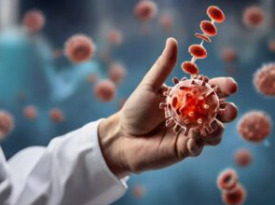
In the ongoing battle against the global COVID-19 pandemic, testing remains a pivotal tool in identifying and mitigating the spread of the virus. Understanding the COVID test process is crucial for individuals seeking clarity on their health status and for society at large in controlling the transmission of the virus.
The COVID test, short for coronavirus test, is a diagnostic examination designed to detect the presence of the SARS-CoV-2 virus, responsible for causing COVID-19. This testing process typically involves the collection of respiratory samples, such as nasopharyngeal swabs, throat swabs, or saliva samples. The collected specimens are then analyzed in specialized laboratories to determine whether the virus is present.
One of the most common types of COVID tests is the PCR (polymerase chain reaction) test. This method amplifies genetic material from the virus, allowing for its detection with high sensitivity. PCR tests are known for their accuracy and reliability, making them a preferred choice in diagnosing active COVID-19 infections. The process involves inserting a swab into the back of the throat or the nose to collect a sample for analysis.
Another widely used testing method is the rapid antigen test. This test detects specific proteins on the surface of the virus and provides results in a relatively short timeframe. While rapid antigen tests offer quicker results, they may be less sensitive than PCR tests, particularly in individuals with low viral loads.
Understanding the COVID test process extends beyond sample collection. Timely and accurate result reporting is essential for effective public health measures. Individuals undergoing testing should be aware of the typical turnaround time for results, which can vary depending on the type of test and the testing facility. It is crucial to follow testing guidelines and any recommended quarantine measures while awaiting results.
Testing plays a crucial role not only in diagnosing active infections but also in identifying individuals who may be carrying the virus without exhibiting symptoms. Asymptomatic carriers can unknowingly contribute to the spread of COVID-19, making widespread testing a key strategy in controlling outbreaks.
In addition to diagnostic testing, there are also serological tests that detect antibodies produced in response to a previous infection. These tests can provide insights into past exposure to the virus but are not suitable for diagnosing active infections. Serological tests can be valuable in understanding the prevalence of the virus within a community and assessing the potential for herd immunity.
In conclusion, comprehending the COVID test process is vital for individuals, communities, and public health systems. Regular and widespread testing contributes to the timely identification of cases, effective contact tracing, and the implementation of appropriate public health measures. By staying informed about the different types of tests available, their purposes, and the importance of result reporting, individuals can actively participate in the collective effort to curb the spread of COVID-19 and protect the well-being of society as a whole.
Navigating Health Safely: Everything You Need to Know About COVID Tests
In the ongoing battle against the global COVID-19 pandemic, COVID tests have become an integral tool in understanding and managing the spread of the virus. As individuals and communities strive to navigate health safely, it is essential to be well-informed about the various aspects of COVID testing.
A COVID test, or coronavirus test, is a diagnostic procedure aimed at identifying the presence of the SARS-CoV-2 virus, responsible for causing COVID-19. The significance of these tests lies in their ability to detect infections, whether symptomatic or asymptomatic, and to facilitate timely public health interventions.
There are several types of COVID tests, each serving specific purposes. The Polymerase Chain Reaction (PCR) test is a widely used method that detects the genetic material of the virus. Known for its high accuracy, the PCR test is effective in diagnosing active infections and is often employed in healthcare settings and testing laboratories. Nasopharyngeal swabs or throat swabs are commonly used to collect samples for PCR testing.
Rapid antigen tests are another category of COVID tests designed to provide quick results. These tests detect specific viral proteins and are valuable for immediate screening, especially in high-traffic settings. While rapid antigen tests offer prompt results, they may have lower sensitivity compared to PCR tests, particularly in individuals with lower viral loads.
Understanding the COVID test process is crucial for individuals seeking testing. Sample collection methods vary, and individuals may undergo nasal swabs, throat swabs, or even provide saliva samples, depending on the type of test and testing facility. It is important to follow testing guidelines and any recommended quarantine measures while awaiting results.
Testing is not limited to diagnosing active infections. Serological tests, also known as antibody tests, are conducted to detect antibodies produced in response to a past infection. These tests contribute to understanding the prevalence of the virus within a community and assessing potential immunity.
Timely result reporting is a key component of the testing process. Individuals should be aware of the typical turnaround time for results, which can vary based on the type of test and testing facility. Adhering to recommended quarantine measures during the waiting period is essential for preventing further transmission.
Regular and widespread testing is a cornerstone of public health strategies to control the spread of COVID-19. Testing facilitates early identification of cases, effective contact tracing, and the implementation of targeted interventions. By staying informed about the different types of tests available, their purposes, and the importance of result reporting, individuals can actively contribute to the collective effort to navigate health safely and curb the spread of COVID-19 in their communities.
What test should I get to see if I have COVID 19
Navigating Uncertainty: What Test Should I Get to Determine COVID-19 Status?
In the current landscape of the ongoing COVID-19 pandemic, individuals find themselves facing uncertainties regarding the most suitable test to determine their COVID-19 status. The question echoes in the minds of many: What test should I get to see if I have COVID-19? Navigating through the array of testing options requires a comprehensive understanding of the available tests and their distinct characteristics.
One of the primary tests employed to diagnose active COVID-19 infections is the Polymerase Chain Reaction (PCR) test. This molecular diagnostic test detects the genetic material of the SARS-CoV-2 virus and is renowned for its high accuracy. If you are seeking confirmation of a current infection, the PCR test is a reliable choice. It typically involves the collection of nasopharyngeal or throat swab samples, and the results are obtained through laboratory analysis.
For those who prioritize swift results, the rapid antigen test offers a quicker turnaround time compared to the PCR test. Rapid antigen tests detect specific proteins on the surface of the virus and are suitable for immediate screening. However, it is essential to note that these tests may have lower sensitivity, particularly in individuals with lower viral loads. If time is of the essence and you need quick results, the rapid antigen test may be a suitable option.
Navigating uncertainty also involves considering serological tests, commonly known as antibody tests. These tests do not diagnose active infections but rather detect the presence of antibodies produced in response to a past infection. If you are curious about whether you have been previously exposed to the virus and developed an immune response, an antibody test may provide valuable insights.
Choosing the right test depends on various factors, including the presence of symptoms, the urgency of results, and the purpose of testing. If you are experiencing symptoms associated with COVID-19, such as fever, cough, or shortness of breath, a PCR test is recommended for accurate diagnosis. On the other hand, if you require rapid results for immediate decision-making, a rapid antigen test may be more suitable.
It is crucial to adhere to testing guidelines and follow any recommendations from healthcare professionals or testing facilities. Timely result reporting is vital not only for personal decision-making but also for contributing to public health efforts in controlling the spread of the virus. Individuals should be aware of the typical turnaround time for results based on the chosen test.
In conclusion, navigating uncertainty about COVID-19 status involves making informed decisions about the type of test to undergo. Whether opting for the precision of a PCR test, the speed of a rapid antigen test, or the insights from an antibody test, individuals play a crucial role in the collective effort to curb the spread of the virus. By understanding the nuances of each test and considering individual circumstances, individuals can make informed choices to safeguard their health and contribute to the broader public health goals.
Choosing Wisely: A Guide to Selecting the Right Test for COVID-19 Detection
In the ongoing battle against the global COVID-19 pandemic, the importance of selecting the right test for accurate detection cannot be overstated. Individuals are often confronted with the question: What test should I get to see if I have COVID-19? Navigating through the myriad of testing options requires careful consideration and an understanding of the distinct features of each test.
One of the primary tests recommended for COVID-19 detection is the Polymerase Chain Reaction (PCR) test. Renowned for its high accuracy, the PCR test detects the genetic material of the SARS-CoV-2 virus, providing a reliable diagnosis of active infections. Typically, nasopharyngeal or throat swab samples are collected, and the results are obtained through thorough laboratory analysis. If precision in diagnosis is a priority, the PCR test is a prudent choice.
For those seeking rapid results, the rapid antigen test emerges as an alternative. This test detects specific viral proteins and offers quicker turnaround times compared to the PCR test. However, it is essential to note that the rapid antigen test may have lower sensitivity, particularly in individuals with lower viral loads. If immediate results are crucial for decision-making, the rapid antigen test may be a suitable option.
Adding another dimension to the testing landscape are serological tests, commonly known as antibody tests. Unlike diagnostic tests, antibody tests do not identify active infections but instead detect the presence of antibodies developed in response to a past infection. If the goal is to understand past exposure and potential immunity, an antibody test may provide valuable insights.
Choosing the right test depends on various factors, including symptoms, the urgency of results, and the purpose of testing. If an individual is symptomatic with signs of COVID-19, such as fever, cough, or shortness of breath, opting for a PCR test is advisable to ensure accurate diagnosis. Conversely, if rapid results are needed for immediate decision-making, the rapid antigen test may be more suitable.
Adhering to testing guidelines and following recommendations from healthcare professionals or testing facilities is crucial. Additionally, being aware of the typical turnaround time for results based on the chosen test is essential for planning and taking appropriate actions while awaiting results.
In conclusion, the process of choosing the right test for COVID-19 detection involves a thoughtful evaluation of individual circumstances and testing priorities. Whether prioritizing accuracy with a PCR test, speed with a rapid antigen test, or insights into past exposure with an antibody test, individuals play a crucial role in the collective effort to curb the spread of the virus. By making informed decisions about testing options, individuals contribute not only to their personal well-being but also to the broader public health goals aimed at controlling and mitigating the impact of the COVID-19 pandemic.
Hello american
hello american - Your Magazine: Famous News, Lifestyle, Health, Technology, Career & fun etc
News:
"Welcome to Hello American's News Hub, where stories unfold and perspectives converge. Stay informed with our diverse coverage of national and global events, providing in-depth analyses, breaking news, and thought-provoking insights that shape our world."
Health:
"Hello American Health: Your Wellness Compass. Discover a wealth of health resources, expert advice, and articles dedicated to promoting holistic well-being. From fitness trends to mental health guides, we're committed to empowering you on your journey to a healthier life."
Lifestyle:
"Experience the Vibrant hello american Lifestyle. Delve into our curated collection celebrating the rich tapestry of American living. Explore travel destinations, culinary delights, fashion trends, and more, embracing the diverse threads that weave the fabric of our culture."
Technology:
"Hello American Tech: Navigating Tomorrow's Innovations. Explore the forefront of technology with us. From gadget reviews to AI breakthroughs, our tech section unveils the latest trends, helping you stay connected and empowered in an ever-evolving digital landscape."
Career:
"Hello American Careers: Empowering Your Professional Odyssey. Embark on a journey of growth and opportunities. Access career insights, job openings, mentorship programs, and skill development resources, designed to fuel your aspirations and drive your career forward."
Education:
"Education Redefined at Hello American. Embrace learning as an ongoing adventure. Dive into our educational hub, where traditional knowledge meets innovative approaches. Explore diverse learning paths, online courses, and resources designed to inspire lifelong curiosity and growth."
Each section offers a tailored experience, catering to the diverse interests and needs of the Hello American audience, while aiming to provide valuable information and resources in these respective domains.
0 notes
Text
Free kids masks in New Orleans!
#covid#mask up#pandemic#wear a mask#covid 19#coronavirus#sars cov 2#public health#still coviding#wear a respirator#NOLA#new orleans
339 notes
·
View notes
Text
Article date: October 14, 2024
Summary: A study found people with long COVID symptoms were twice as likely to have lingering SARS-CoV-2 proteins in their blood, suggesting a persistent viral reservoir may drive some ongoing symptoms. Researchers analyzed blood from 706 individuals and found that 43% of those with multisystem long COVID symptoms had viral proteins present months post-infection, compared to 21% of those without symptoms. This discovery hints at potential benefits from antiviral treatments for those with persistent symptoms. However, the study also reveals that not all long COVID cases show persistent viral proteins, indicating other causes may contribute to this complex condition. Key Facts: 43% of individuals with multisystem long COVID symptoms had persistent viral proteins. 21% of those without long COVID symptoms tested positive for viral proteins. Findings suggest long COVID may have multiple causes, possibly including immune dysfunction.
Read the rest.
#covid news#covid 19#covid-19#health news#long covid#coronavirus#still coviding#mask up#covid isn't over
80 notes
·
View notes
Text
Happy 2025!…
I am very ill.

Starting off the new year with a bang, I got covid-19! Yay!
Before anyone asks, yes I’m fine. Just very sick. I am not dying. Probably.
Jokes aside, I am fine- but don’t expect to see a lot of posts/art from me because I can barely even sit up. Super sorry about this mini covid hiatus, hopes are I start feeling better in a few days!
Hope y’all are having a better start to 2025, lotsa love! 💚
I want you guys to see my Furby collection too


(And yk all the other shit on this shelf)
#wolf fursona#wolf furry#furry character#fursona#furry#sfw furry#furry art#furry oc#furry fandom#covid 19#coronavirus#sickness#hiatus#2025#new year 2025#my furby#furby love#furby 1998#furby fandom#furby#furblr#furby community#furbies
21 notes
·
View notes
Text
Amanda Marcotte at Salon (12.16.2024):
In the face of Vice President Kamala Harris losing the presidential election to Donald Trump, the punditry's focus has been almost exclusively on asking how the Democrats couldn't beat a relentless liar with 34 felony convictions and a previous attempted coup under his belt. Everyone has a different theory about Harris' "messaging," with every critic inevitably arguing that if she had just talked more about their pet issue, she would have won. Another option, however, is to listen to what swing voters who backed Trump said about their decision. That would seem the wisest choice, but to be fair to people who don't want to go there, hearing these people out is a truly miserable experience. What quickly becomes evident about the median voters in an American focus group is how profoundly opposed they are to even the most basic factual information. On the contrary, it's a community with a pathological aversion to reality, where people compulsively react to anything truth-shaped with hostility, running as hard as they can toward disinformation. They are addicted to BS. Of course they voted for Trump, the country's most reliable dealer of their favorite drug.
This may sound ungenerous to these voters, but only if you've been sparing yourself the torture of engaging their actual opinions. If you hold your nose and dive in, it's startling how much the typical swing voter is allergic to facts. It's not just ignorance, but overt hostility to anything that smacks of veracity. Such as the Trump voter who insisted to the New York Times that Democrats are "lying about pregnancies," by conveying factual information about abortion bans. Or the one who falsely believed "so many people just walk right across the border and get free housing, free food." Or the one who was excited that "Trump brings a Robert Kennedy Jr. or a Tulsi Gabbard and Elon Musk." Or the one who said the "Democratic Party [is] going after average people who disagreed on Covid, who disagreed on school boards, who disagreed on boys playing in women’s sports," which is just a way to complain about liberals who criticize him on social media for saying things that aren't true.
Sarah Longwell's "Focus Group" podcast ended the year by interviewing Joe Rogan fans who voted for Trump for the first time this election. It was a smart choice, and not just because Rogan's endorsement likely pushed Trump over the top in a shockingly close election. Rogan's audience perfectly illustrates the way the firehose of disinformation online — his conspiracy theory-hyping podcast has over 16 million followers — has pickled the brains of so many otherwise normal people. Most of the people Longwell interviewed couldn't go two minutes without coughing up a conspiracy theory. Everything is a shadowy plot, from the COVID-19 pandemic to the guy who shot Trump in Butler, Pennsylvania. The straightforward details of the shooting of UnitedHealth CEO Brian Thompson came out after the arrest of Luigi Mangione, and yet these voters refused to believe the banal facts. Some are wallowing in theories that Mangione is a patsy, or that the shooting is a psyop. The truer any information was, the more they rejected it.
After the insurrection of Jan. 6, a lot of attention was paid to the rise of QAnon, because so many rioters were adherents to this online cult that preached that Trump is a savior prophesized to stop a worldwide Satanic conspiracy. Alarming reports showed millions of Americans believed QAnon myths, such as the divinity of Trump or that Democrats drink children's blood. QAnon is still around, but it gets much less media coverage these days. One likely reason is what we see in these focus groups: bonkerballs levels of conspiracy belief is no longer a fringe phenomenon. QAnon-style beliefs are simply the norm in American society. I wrote about this right after the election, but it bears repeating: One of the best predictors, if not the best predictor, of a Trump vote is how poor a person's information ecosystem is. People who read or watch real news outlets voted overwhelmingly for Harris. People who get their political information from social media voted for Trump. Subsequently, polls showed that Trump voters couldn't answer basic factual questions about what the candidates believed. Harris voters were far more accurate.
It's not like Americans got hit with a stupid bomb, sending millions of us away from the real news and toward nonsense peddlers like Rogan. On "Focus Group," they briefly discussed how people's boredom during the pandemic caused them to spend more time on social media and listening to podcasts. Many got deeply addicted to disinformation during that period. (Interest in QAnon certainly spiked.) COVID-19 isn't the threat it was, but millions of those people still have the conspiracy theory monkey on their backs, as evidenced by Rogan's enormous audience.
Why are conspiracy theories so addictive? Having researched the issue for an investigative report last year, I think there are two main reasons. First, like actual drugs, conspiracy theories relieve boredom. As Jamelle Bouie of the New York Times argued during the height of the drone mania earlier this month, the "drones" were mostly planes, hobbyist drones, and stars, but "life does seem more exciting if you think the Iranians are specifically interested in the everyday activities of New Jerseyans." Boredom was especially high during the pandemic, which is why so many otherwise stable people went straight down the conspiracy rabbit hole.
But while boredom is the gateway, ego flattery is why people keep coming back. The allure of the conspiracy theory is that you, Joe Nobody, understand a topic far more than the experts who spent their lives working on this issue. You understand viral transmission more than medical scientists. You see the hidden secrets of the "deep state" the journalists on Capitol Hill are missing. You, with your enormous brain, understand every field from nutrition science to American history far more than those people who study and research. This is why people who get into one conspiracy theory start digging into others.
Amanda Marcotte wrote in Salon recently about how the normalization on QAnon-type conspiracy theories helped put Donald Trump in office.
News consumption and which sources of news someone consumed was a big factor as to how someone voted this election, with those getting news primarily from podcasts (esp. right-wing and right-adjacent) and/or social media leaning majorly towards Trump and those getting news primarily from legacy outlets leaning majorly towards Kamala Harris.
#Conspiracy Theories#QAnon#2024 Presidential Election#2024 Elections#Disinformation#Sarah Longwell#Joe Rogan#Podcasts#News Consumption#Coronavirus#Kamala Harris#Donald Trump
31 notes
·
View notes